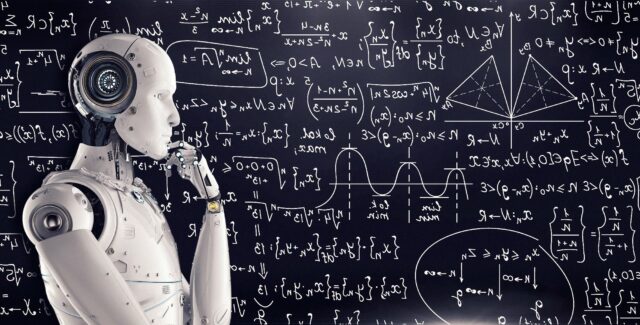
Artificial intelligence is beginning to shift how we think about and engage with mathematics. From assisting with notoriously difficult proofs to surfacing entirely new ideas, AI tools are starting to change methods that, frankly, haven’t evolved much in centuries. It’s a fascinating shift—one that hints at a future where human insight and machine power intertwine to push mathematical discovery into new territory.
Key Takeaways
- AI is helping automate parts of mathematical theorem proving—an effort that has traditionally been highly human-driven.
- Tools like Google DeepMind’s AlphaGeometry are already solving tough geometry problems with remarkable skill.
- AI can detect hidden patterns in massive datasets, leading to new conjectures in fields such as number theory and graph theory.
- Combined with proof assistants, AI is improving the rigor and accuracy of proof verification.
- AI-powered platforms are transforming how people learn math, making it more accessible and adaptable to individual needs.
AI’s Growing Role in Proving Theorems
Proving mathematical theorems has always demanded extraordinary patience. Some proofs take years—or in a few cases, centuries. But now, AI is stepping in as a kind of tireless research assistant. Powered by large language models and symbolic logic engines, modern theorem provers can sift through volumes of mathematical writing and, in certain cases, even generate partial or full proofs.
Take AlphaGeometry, for instance. Developed by Google DeepMind, it merges a neural language model with a rule-based symbolic system. The result? It has successfully tackled Euclidean geometry problems that are typically reserved for top human problem-solvers—on par with International Mathematical Olympiad gold medalists. What’s striking is how it works: predicting relevant constructions, then applying formal logic to solve. Right now, its scope is mostly confined to geometry, but the implications are clearly much broader.
Discovering Patterns and New Conjectures
Beyond just proving theorems, AI’s knack for spotting patterns is pushing mathematics into intriguing new directions. In number theory, for example, AI has uncovered subtle regularities in the distribution of prime numbers—an area that’s central to cryptography and data security. And in graph theory, advanced models like graph neural networks are helping researchers make sense of complex structures that were previously too dense to decode.
Perhaps most interestingly, some AI systems are now starting to propose entirely new conjectures. That’s not to say they’re replacing mathematicians, but they are posing questions that might never have surfaced otherwise. These fresh conjectures could expand entire mathematical subfields, giving researchers new avenues to explore.
Enhancing Proof Verification and Collaboration
Then there’s proof verification—an essential but often overlooked part of math. Tools like Lean and Coq, known as proof assistants, let mathematicians write their work in formalized code. When combined with AI, these tools can walk through each logical step, flagging inconsistencies or errors that a human might miss.
This not only builds trust in complex results, but also allows more mathematicians to contribute to large collaborative efforts without everyone needing to understand every last detail. The AI helps bridge gaps—both in communication and in knowledge—between different areas of specialization. It’s not a stretch to imagine a future where mathematicians work on smaller, focused tasks, confident that AI is helping to piece everything together reliably.
Impact on Mathematical Education
The influence of AI is also reaching into classrooms and study sessions. AI-powered tools are offering students personalized experiences—whether that’s through tutoring platforms, real-time feedback, or interactive visualizations. Apps like Wolfram Alpha, Socratic, and Photomath break down problems step by step, helping learners not just arrive at answers but actually understand the reasoning behind them.
From elementary math to advanced calculus, these tools are meeting students where they are, adjusting to their pace and needs. And because many of them can interpret handwritten problems, learning feels more natural and less mechanical. In a way, AI is acting like the ideal study partner: smart, patient, and always available.
Of course, while the momentum is exciting, it’s worth acknowledging that AI still has limits. It doesn’t (yet) possess the intuition or creativity that define much of pure mathematics. Machines don’t experience those sudden “aha” moments or leap across abstract ideas quite like people do.
Still, with rapid progress in AI research and a growing spirit of collaboration between humans and machines, the future looks promising. Mathematical discovery might not just speed up—it could take on entirely new forms we’re only beginning to imagine.
FAQ
Q1: Can AI replace human mathematicians entirely?
A1: No—at least not anytime soon. AI is proving to be a powerful assistant, especially in automating tedious tasks. But the core of math—posing new problems, finding deep connections—still heavily relies on human intuition and creativity.
Q2: How does AI help in proving mathematical theorems?
A2: It assists by analyzing existing literature, generating portions of proofs, and suggesting new approaches. In some areas, like geometry, AI has even managed to construct full proofs.
Q3: What is AlphaGeometry?
A3: AlphaGeometry is an AI system from Google DeepMind that solves challenging Euclidean geometry problems. It uses a combination of a neural language model for generating ideas and a symbolic engine for formal reasoning—achieving performance similar to human experts.
Q4: Can AI help students learn mathematics?
A4: Definitely. Many AI tools now offer personalized tutoring, immediate feedback, and concept visualization. They adapt to individual learning styles, making math more approachable and understandable.
Q5: What are “proof assistants” in mathematics?
A5: Proof assistants are software systems that help write and verify mathematical proofs step by step. They ensure that each logical move adheres to strict rules. AI enhances these tools by making the process faster and more accurate.










